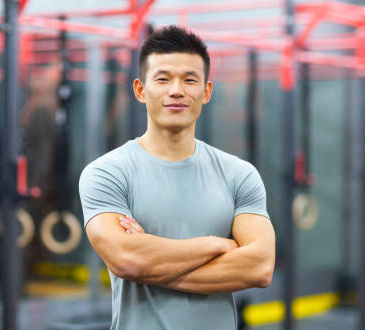
Beginner Yoga Poses for Improved Flexibility
This Article Aims To:
- Introduce you to yoga practice and flexibility
- Explain why and how yoga is vital to your health
- Provide you with beginner yoga poses that you can try
- Give you tips on how you can get the best out of yoga practice
There is a quote in the yoga fraternity that says, "When it comes to yoga, it's not about touching your feet but rather what you learn and gain on your way down." So, let's roll out our mats and limber with beginner yoga poses that will make you feel more like a rubber band than a rock. And don't worry; you don't need to be a "yoga person" to join in - even if you can't pronounce "Surya Namaskar'' correctly (don't worry, we won't judge!), you can still reap the benefits of improved flexibility by regular yoga practice.
Beginner Yoga Poses for Improved Flexibility
Ashtanga Vinyasa Yoga
Ashtanga Vinyasa Yoga is a technique focused on a strong and fluid series of poses. Increased flexibility is one of the advantages of practicing Ashtanga Vinyasa Yoga. This is accomplished by combining energetic movements, profound stretches, and breath-to-movement synchronization. The practice consists of a sequence of positions, or asanas, that build on one another to open up the body progressively. Bandhas, or energy locks, are practices used in Ashtanga Vinyasa Yoga that generate internal strength and stability, allowing for greater flexibility in the body. Frequent Ashtanga Vinyasa Yoga practice can result in an enhanced range of motion, better posture, and a stronger sense of physical and mental well-being.
Here's a quick rundown of how it's usually done:
- The practice begins with a series of Sun Salutations, which are positions that warm up and create heat in the body.
- Following that, a series of standing poses increases strength and balance.
- A series of sitting postures follow this to increase flexibility and stretching.
- The practice culminates with a series of ending postures that assist in calming the mind and preparing the body for rest.
Movement and breath are synced throughout the practice, and each posture is held for a certain number of breaths before going on to the next.
Standing Poses
Mountain Pose (Tadasana)
While this position appears straightforward, it is a powerful technique for enhancing balance and developing general body consciousness. Standing with your feet hip-width apart, lift your head and root up through the top of your feet. While you extend your spine and engage your core, see a string lifting you upward.
Warrior II (Virabhadrasana II)
Although simultaneously opening up the chest and hips, this posture is a terrific method to strengthen and stabilize the legs. Stretch your arms to the sides while standing with your right foot forward in a lunge stance, then look over your right hand. Press down through the outside of your left foot with your right knee bent above your ankle.
Triangle Pose (Trikonasana)
Straighten your right leg while still in Warrior II, then lower your right hand to the ground or your right shin. Your left arm should be raised towards the ceiling while you look up at your fingertips. Push down with both feet to cushion your lower back and tighten your abdominal muscles. This yoga stretches and lengthens the hamstrings, hips, and spine while targeting and strengthening the musculature of the legs, hips, spine, and core. It also activates and tones the abdominal and back muscles, increasing balance and stability.
Tree Pose (Vrikshasana)
Beginning in Mountain Pose, move your weight to your left foot, putting your right foot on the inner of your left thigh or calf. Either raise your hands toward the sky or bring them together to your heart. Hold your eyes steady momentarily, then switch to the opposite side. Tree Pose (Vrikshasana) improves balance and stability while strengthening the legs, hips, and core muscles, enhancing focus, concentration, and mental clarity.
Seated Poses
Seated Forward Bend (Paschimottanasana)
Reach your arms up toward the sky while sitting with your legs in front of you. Next, while maintaining a long spine and relaxed shoulders, tilt forward from your hips and reach toward your toes. This stretch extends the hamstrings, spine, and shoulders while also calming the mind and relieving tension and anxiety. This position can also help with digestion, stimulate the abdominal organs, and relieve weariness.
Bound Angle Pose (Baddha Konasana)
The hips and groins can become more flexible with the aid of this butterfly position, which also encourages calmness and relaxation. Your feet should be together when you sit with your knees out to the sides. Lengthen your spine and bring your heels closer to your groin. You can remain upright or tilt forward from the hips to deepen the stretch.
Staff Pose (Dandasana)
Engage your core and leg muscles while you sit with your legs in front of you. When you extend your arms toward the sky, visualize growing longer from the crown of your head. Staff Pose (Dandasana) improves posture while strengthening the back and stretching the hamstrings and shoulders. It also aids in mental relaxation and focus.
https://www.youtube.com/shorts/N0qiuWe7dbs
Supine Poses
Supine poses are yoga poses that are done while lying on your back. They are excellent for releasing body tension and stress while promoting relaxation and calm.
Reclining Hand-to-Big-Toe Pose (Supta Padangusthasana)
This position helps to relax the body and promotes calmness while stretching the hamstrings and increasing leg flexibility. Use a strap or cloth to loop over one foot as you lay on your back with your legs in front of you. Before swapping sides, raise your leg towards the sky while maintaining a straight knee. This exercise stretches the hamstrings, hips, and lower back while enhancing flexibility and range of motion. It also encourages relaxation and can aid in the relief of tension and anxiety.
https://www.youtube.com/watch?v=cWodwKfvT3Y
Corpse Pose (Savasana)
This posture may be performed independently for stress reduction and relaxation, but it is frequently employed as a relaxation pose at the end of a yoga session. Lay on your back with your arms and legs outstretched. Concentrate on taking deep, complete breaths. Relax by letting your body sink into the ground and releasing tension or stress. Savasana (Corpse Pose) relieves stress and relaxes the entire body and mind while boosting attention and concentration. It can also help with tension, worry, and weariness, creating inner serenity and well-being.
https://www.youtube.com/shorts/vab_XyKP8ZY
Happy Baby Pose (Ananda Balasana)
Hip and lower back tension may be quickly released, encouraging calmness and relaxation through this supine pose. Your knees should be close to your chest when you lay on your back. After your knees are wide open, grab hold of your feet, pushing outwards to align your ankles with your knees. To gently massage the spine, rock back and forth. This exercise stretches the inner groin, hips, and lower back while relieving tension and encouraging relaxation. It can also relieve stress and anxiety, digestion, and circulation.
https://www.youtube.com/shorts/xbDkoBGNUP8
Basic Yoga Principles and Practices To Know For Better Results
Flexibility is vital for general health and well-being. Yoga can help you become more flexible, expanding your range of motion, lowering your risk of injury, and enhancing your balance and posture. As a beginner, starting with basic poses and gradually working up to more advanced postures is essential. It's also important to listen to your body and avoid pushing yourself beyond your limits. You can find a physical or online teacher to guide you or use instructional videos, which can be found online.
Yoga and Mental Health
Yoga has many advantages, both physical and psychological. It encourages relaxation and lowers levels of the stress hormone cortisol, allowing individuals to regulate their thoughts and emotions better. It also develops awareness through physical postures, breathing exercises, and meditation, enabling people to be present in the moment and have a more profound feeling of inner peace and satisfaction. Consistent yoga practice can have a significant impact on one's mental health.
Yoga And Dietary Requirement
Nutritional needs are critical in obtaining maximum health and fitness, and this is especially true for yoga practitioners. Protein is a macronutrient that is necessary for the development, repair, and upkeep of muscles and other tissues in the body. A well-balanced diet that includes enough protein can assist in building lean muscle mass, boost strength and endurance, and improve overall physical performance, all of which can enhance the advantages of yoga practice. Moreover, protein can aid in minimizing muscular pain and inflammation and maintain healthy bone density, making it an essential component of any yoga practitioner's diet.
Importance of Proper Breathing Techniques During Yoga Practice
Yoga breathing, commonly referred to as pranayama, aids in boosting lung capacity, lowering blood pressure, lowering stress and anxiety, and enhancing general lung and heart health. Proper breathing methods help the body move more efficiently and effectively when executing yoga poses, enabling deeper stretches and a more productive practice. Moreover, deep breathing promotes mental clarity and calmness, enabling practitioners to commit completely to their practice. As a result, effective breathing methods are essential to any yoga practice and support a comprehensive, holistic approach to healing.
Frequently Asked Questions
-
Is it safe to practice yoga during pregnancy?
-
Can yoga help with stress and anxiety?
-
Is it better to practice yoga in a class or at home?
-
What's the difference between yoga and stretching?
-
Can I practice yoga if I'm not spiritual?




